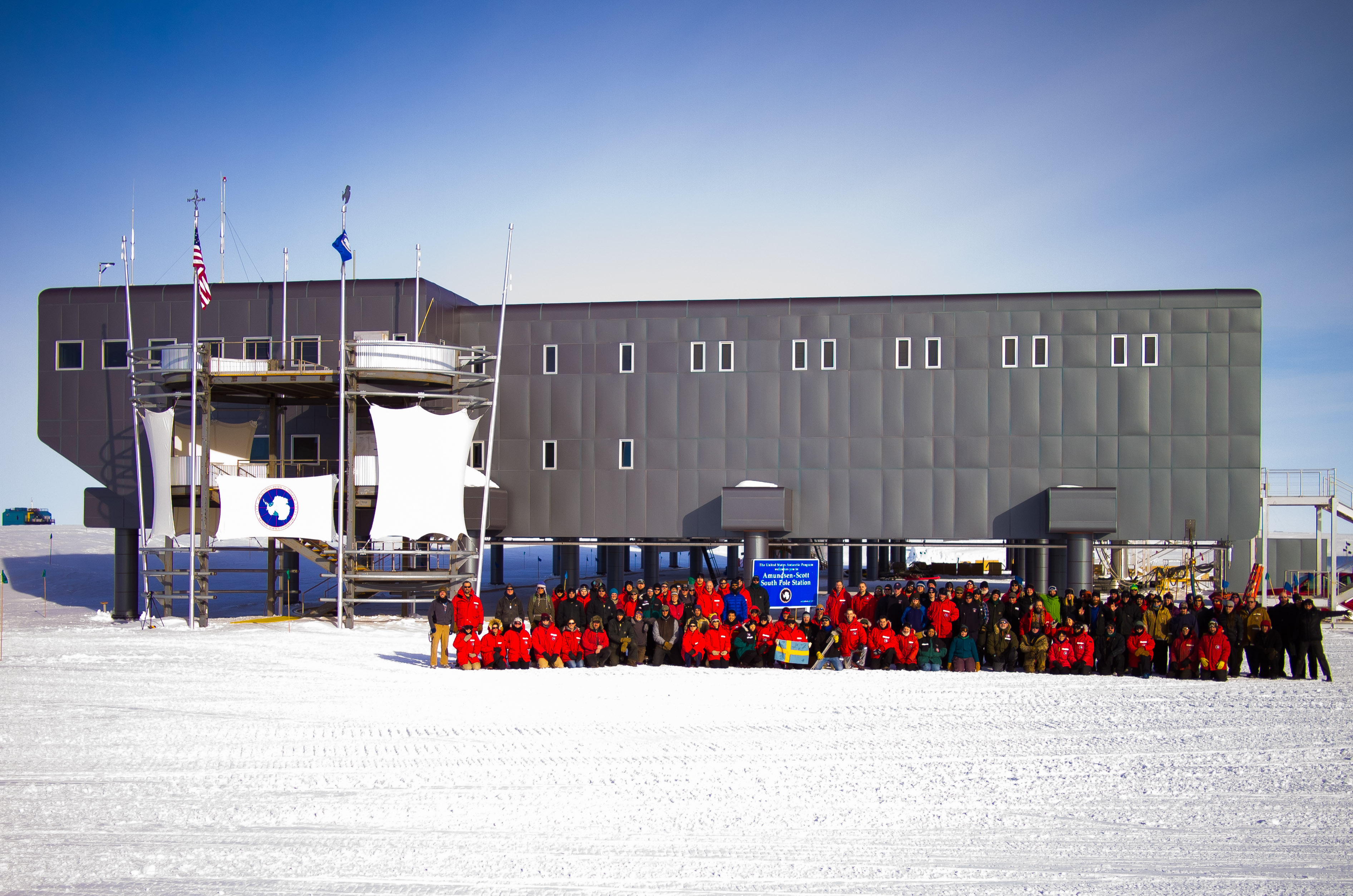What is it like to live and work in Antarctica?
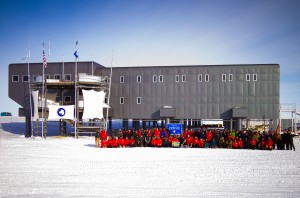
I recently answered this question on Quora.com and thought I’d reproduce my response here along with some photos. Enjoy!
My husband and I worked at the South Pole Station; I have been there one season and he has been there 5 seasons (all summer seasons). About half the population is scientists and half is support staff. We were support staff. Scientists seem to work seven days a week as much as needed; support staff typically work 54 hours per week (9 hours per day, 6 days per week) and most have Sundays off, but that varies depending on the job position.
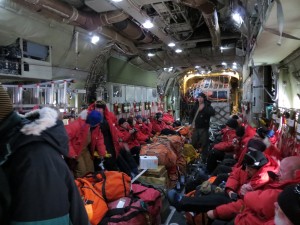
At the beginning and end of the summer season, outside temperatures can be almost -60°F, with wind chills in the -70s to -80s. We arrive in a C-130 on skis, operated by the US Air Force. It’s a big, noisy, vibrating aircraft from WWII era and people are strapped to the inside walls in little canvas seats with seat belts. Once the plane reaches a safe altitude, passengers are allowed to get up and look out the tiny windows on the sides and go up into the cockpit to look out the bigger windows.
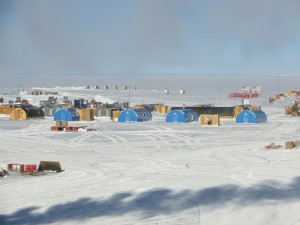
In previous years, the population at the South Pole would get up to around 250 people in the summer, but now that the construction on the elevated station is complete, they are cutting down to 150, which is what the station is designed to house. During the 2012-2013 summer we maxed out at 187 people. The tented area known as “Summer Camp” is being shut down; this past season they used a few outbuildings but the majority of the population lived inside the main station, including my husband and me. It is my understanding that in the upcoming season they will not use summer camp at all.
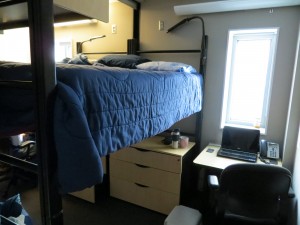
Berths in the main station are very small–about the size of a walk-in closet–but quite comfortable, with a twin sized bed, closet, desk, phone, and lamp. There are ethernet cables so you can hook up your laptop to the internet, which is only available during certain hours depending on the satellite connection. Some of the rooms have walls between them that can be removed so you can turn the room into a “double” for couples who work there. That’s what we had–we basically put the twin beds next to each other and turned them into a king-size bed. Our rooms had windows and since the sun shines 24/7 during the summer, we had to cover them up at “night” so we could sleep.
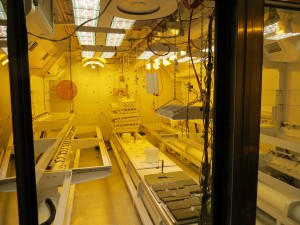
There are established meal times 3 times per day; the galley staff do a great job of making tasty things to eat even though most of their ingredients are canned and frozen (and usually several years beyond the expiration date, but since the food is stored at -60F year-round it doesn’t usually matter). The station also has a growth chamber (“greenhouse”) where they can grow lettuce, strawberries, melons, peppers, herbs, tomatoes, and other freshies. This used to be used year-round but they seem to be using it only for winter-overs now. Theoretically fresh food is flown in during the summer but that didn’t happen much in 2012-2013. Vegetarian options are always available (good for us, since we are vegetarians), but by the end of the season I was craving fresh salad. The galley puts on special meals for the holidays, complete with festive decorations. Christmas time is about the warmest time of the year at the South Pole; temperatures typically get up to around -10°F.
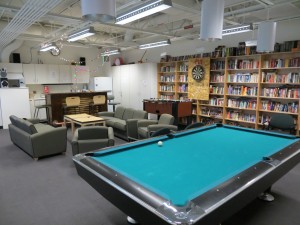
Polies do a lot to entertain each other during the non-work hours; typically there are sports activities, bands, language clubs or classes, dance classes, martial arts classes, science lectures, cookie-making nights, costume contests, carnivals, parties, movies and more. It would almost seem like a summer camp if we didn’t work so many hours! The station itself has nice facilities to keep people entertained–there is a gym, an exercise room, a band room, two lounges where people can watch TV or play video games, a library, a sauna, an arts and crafts room, a store, etc. Summer camp has a climbing wall which is still in use, too. Each year at Christmas there is a “Race Around The World”–a two mile run which circumnavigates the geographical South Pole and takes runners through all the time zones (although officially the South Pole operates on the New Zealand time zone), and there’s also been a marathon for the past few years around New Years Day, for the super crazy runners.
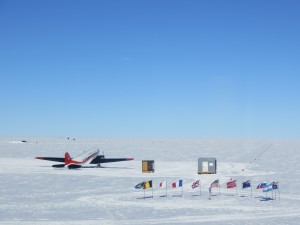
Every summer the South Pole gets a few tourists who pay around $50,000, give or take a few grand, to see the bottom of the world. Most fly in; some ski in. Some pay their tour guides to get a tour of the station (though the station itself doesn’t make any money from them), so we see them coming through once in awhile.
The South Pole was a great experience for me; I would love to go back. The season (3.5 months) went by very quickly.
Enter your name and email to receive my newsletter and stay up to date!
We hate spam as much as you. Your email is safe with us.

